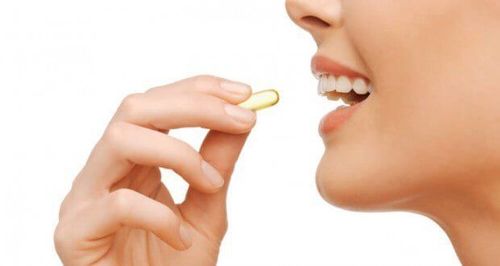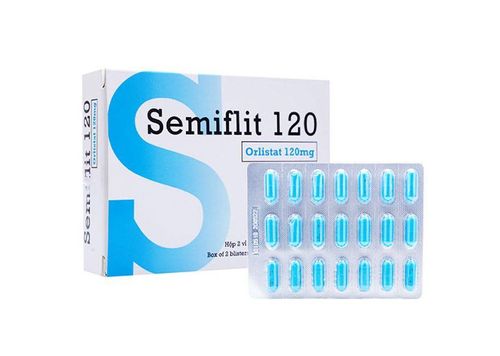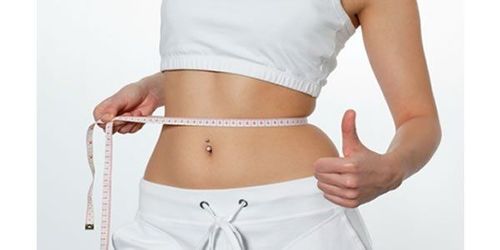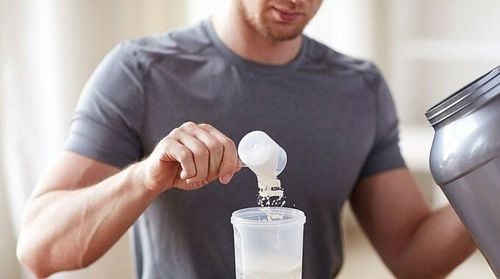This is an automatically translated article.
Bariatric surgery can give you a fresh start in health and fitness. Following the recommended before and after diet will set you up for success in the long run. The right diet can protect you from surgical complications and teach you how to eat well for the rest of your life.
1. The role of diet in bariatric surgery
Before having bariatric surgery, you must first qualify for the surgery and understand the risks and benefits involved. Adults who qualify for this surgery are typically more than 45kg overweight or have a body mass index (BMI) over 35. You may also be eligible if your BMI is between 30 and 35, and you're in good health. at risk because of your weight and lifestyle changes that don't lead to weight loss.
To be able to meet the requirements of bariatric surgery, you should also be willing to relearn your dietary habits. New eating habits can help ensure a positive and lifelong success of surgery.
Before surgery, you need to plan a special diet to follow both before and after surgery.
The pre-surgery diet is aimed at reducing the amount of fat in and around your liver, reducing the risk of complications during surgery.
After surgery, your doctor will adjust general dietary guidelines for you. What to eat to lose weight? The post-surgery diet usually includes several weekly phases. It helps you recover, meet the needs of your now smaller stomach, and get into healthier eating habits.
2. Diet before surgery
Weight loss before surgery reduces the amount of fat in and around the liver as well as in the abdomen in the body, allowing it to be done laparoscopically. Laparoscopic surgery is less invasive, requires less recovery time, and is easier on your body.
Losing weight before surgery not only makes you safer during surgery, but also helps you practice a new way of eating.
Your exact eating plan and pre-implementation weight loss goals will be determined by a specialist and possibly with the help of a dietitian.
Your eating plan can start as soon as you are done with the procedure. If enough weight is not lost, the procedure may be postponed or cancelled. For this reason, you should start your diet plan as soon as possible.

Chế độ ăn kiêng trước khi phẫu thuật giảm cân được nhiều người quan tâm
3. Diet rules before surgery
The guidelines will vary from person to person, but they may include the following:
Eliminate or reduce the amount of saturated fat consumed, including whole dairy products, fatty meats and fried foods. Eliminate or reduce the intake of foods high in carbohydrates, such as sugary desserts, pasta, potatoes, bread, and bread products. Eliminate drinks that are high in sugar, such as juices and soft drinks. Control portion sizes. Avoid binge eating. Don't smoke. Avoid substances not recommended by your doctor. Avoid alcoholic beverages. Do not drink beverages with your meal. Take a daily multivitamin. Consume protein shakes or protein powders. Protein helps strengthen and protect muscle tissue. This can help your body burn fat instead of muscle for fuel. Protein also helps keep your body strong, which can speed recovery.
As the day of your surgery approaches, you may need to follow a mostly liquid or liquid-only diet. Based on your weight and overall health, your doctor may allow you to eat some solids during this time. This may include fish, hot cereal soaked in water, or soft-boiled eggs.
Before surgery, be sure to ask your anesthesiologist for instructions on what you may or may not have prior to surgery. These recommendations may vary depending on your situation. For example, your doctor may want you to drink carbohydrate-rich liquids within 2 hours before surgery.
4. Diet after surgery
How is nutrition after slimming surgery done? The post-surgery diet plan consists of several stages. How long each phase lasts and what you can eat and drink will be determined by your healthcare provider or dietitian.
All stages emphasize the importance of controlling your sections. This habit will help you continue to lose weight and prepare you for how to eat and drink for the rest of your life.
Phase 1: Liquid Diet
In phase 1, your nutritional intake will go towards helping your body heal after surgery. Your diet can help you avoid some of the complications that can occur after surgery.
For the first few days, you are only allowed to drink a few ounces of clear liquids at a time. This helps your stomach heal without being stretched by the food.
After clear liquids, you'll move on to other liquids, including:
Decaffeinated coffee and tea Skim milk Thin soups and broths Sugar-free juices Sugar-free Gelatin Sugar-free ice Phase 2 : Filter Diet
After your doctor decides you're ready, you can move on to stage 2. This phase consists of foods that have been pureed to a pudding-like consistency.
Many foods can be prepared at home using a food processor, blender or other appliance.
Spicy spices can irritate the stomach, so avoid them altogether or try them one at a time. Avoid fruits and vegetables with a lot of seeds, such as strawberries or kiwi. You should also stay away from foods that are too fibrous to liquefy, such as broccoli and cauliflower.
Instead, choose foods that are easy to liquefy, such as:
Fruits with apple sauce, bananas, canned fruits, peaches, apricots, pears, pineapples, melons Spinach, carrots, squash, beans green Protein yogurt, cottage cheese, ricotta cheese, beef, chicken, turkey, white fish (cod, tilapia, cod), scrambled eggs Stage 1 food (solids free) ) and vegetable juices However, at this stage it is important not to drink liquids with your meal.

Người bệnh nên hạn chế ăn cay sau phẫu thuật giảm béo
You will probably eat nothing but cooked food for several weeks. After your doctor decides you're ready, you can start making soft, easy-to-chew foods into your diet. These may include:
Soft-boiled eggs Minced meat Grilled or steamed white fish Canned fruit with sugar water, such as peaches or pears It is important to eat small pieces. Eat a little at a time and practice good portion control.
Stage 4: Stabilization
Phase 4 of the gastric bypass diet includes reintroduction of solid foods. It usually begins about 2 months after surgery. Since your stomach is much smaller, you still need to chop or shred food. Large pieces of food can cause a blockage, leading to pain, nausea, and vomiting. Slowly introduce new foods. That way, you can best determine which types your stomach can tolerate and which to avoid. Eliminate any foods that cause stomach upset, vomiting or nausea. Foods and drinks to avoid during phase 4You should not try certain foods and drinks, such as those that are difficult to digest. . Includes:
Veggies that are string or string, such as okra skins Popcorn corn on the cob Carbonated drinks, such as soft drinks and water Tough meat Fried foods Crispy foods, such as crackers , granola, seeds and nuts Dried fruit Bread and bread products, such as muffins About 4 months after surgery, you can return to eating and drinking. However, portion control is still very important. Make sure your diet consists mainly of fruits, vegetables, lean protein, and healthy carbohydrates. Avoid unhealthy foods that are high in fat, carbohydrates, and calories. Eating well means you can continue to be healthy without regaining the weight.
5. The overall guide to the post-surgery diet
Your post-surgery dietary guidelines will also serve you for a lifetime. These include:
Eat and drink slowly. Practice portion control. Listen to your body. If you can't tolerate a food, such as something spicy or fried, don't eat it. Avoid foods high in fat and sugar. Enjoy drinks between meals, but not during meals. Provide enough recommended daily water content to avoid dehydration. Only eat small pieces at a time and chew each bite thoroughly. Take the vitamins your doctor recommends. Lifestyle changes after surgery Low-impact exercises are a good choice for the first month. These include walking and swimming. You can also benefit from simple yoga poses, stretching exercises, and deep breathing.
Over the next few months, you can slowly start strength training and cardio.

Sau phẫu thuật giảm béo bạn nên bổ sung viitamin
6. Possible complications of surgery
Following a proper diet before and after surgery can help you avoid complications, such as dehydration, nausea and constipation.
Congestion
Sometimes the connection between your stomach and intestines can narrow. This can happen even if you are careful about what you eat.
If you have nausea, vomiting or stomach pain for more than 2 days, let your doctor know. These are all symptoms of a possible blockage.
Skipping syndrome
Portion control, eating slowly, and staying away from high-sugar, high-fat foods can also help you avoid what's known as dumping syndrome. Dumping syndrome occurs if food or drink enters your small intestine too quickly or in too large amounts.
Eating and drinking at the same time can also cause rejection syndrome, because it increases the volume absorbed.
Rejection syndrome can occur at any stage of the detox diet. Symptoms include: Sweating, nausea, vomiting, dizziness, diarrhea
To avoid this syndrome you should apply a good rule of thumb: spend at least half an hour eating each meal.
Choose foods that are low in fat and have little or no sugar. Wait about 30 to 45 minutes before drinking any liquids, and always sip liquids very slowly.
If you have any questions related to the topic of nutrition for the body that need advice from a doctor, you can leave your question in the ASK VINMEC DOCTOR section directly on the hospital website. Your question will be sent to the doctor and you will receive a consultation as soon as possible!
Please dial HOTLINE for more information or register for an appointment HERE. Download MyVinmec app to make appointments faster and to manage your bookings easily.
References: mayoclinic.org, healthline.com













